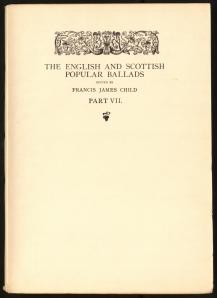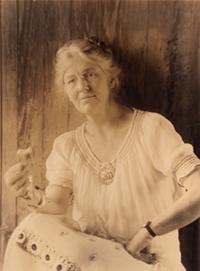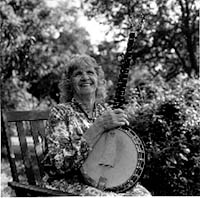While studying at my previous college, I was fortunate enough to take a class on Appalachian ballads and folksongs. Prior to taking this class, I knew little about the tradition of ballad singing; however, ballads are an important part of Appalachian culture, as they illustrate people’s traditions, history, and beliefs.
A ballad is “[a] form of verse to be sung or recited and characterized by its presentation of a dramatic or exciting episode in simple narrative form. [Professor] F. B. Gummere describes the ballad as “a poem meant for singing, quite impersonal in material, probably connected in its origins with the communal dance, but submitted to a process of oral tradition among people who are free from literary influences and fairly homogeneous in character.””
Throughout the world, many different cultures have sung ballads. It is thought that these songs originated in Europe during the Middle Ages. The format of a ballad varies depending on where it is from. For example, British and American ballads are often “rhymed and strophic,” while Danish ballads employ assonance. Ballads, which are often quite lengthy, are usually repetitive. Because ballads are traditionally performed from memory, repetition and specific inflections of the voice help singers remember the words to the song. Additionally, well-known imagery is used throughout most ballads. Phrases such as “lily white” and “ladies gay” are used again and again. While ballads can be performed a cappella or with musical accompaniment, the same tune may be used for multiple songs. Further, the same song may have countless versions with alterations in the tune, words, or storyline.
Again, ballads started in Europe, with the most popular songs being from England, Ireland, and Scotland. When immigrants from these countries moved to America, they brought their songs with them. Known as love songs, most ballads discuss “eternal themes of love, death, honor, and betrayal.” In the eighteenth century, many Scots and Scotch-Irish people ended up settling in the Appalachian region of what would become the United States because the terrain reminded them of home.1
As time progressed, many changes took place in America; however, as I’ve mentioned in other posts, the people hidden away in the Appalachian Mountains were isolated from mainstream society, meaning that parts of their culture such as speech patterns, beliefs, music, and diet were preserved.
In the mid-1800s, Harvard Professor Francis James Child began to collect English and Scottish ballads from manuscripts. His compilations of ballads provided the first real organized and accessible “standard reference work” for people to use and study.2 While Child himself did not do fieldwork, many song collectors began to study ballads in America after his works were published.3 The movement was further encouraged by the American Folklore Society, which was formed in 1888.
While many scholars contributed to the preservation of ballads, Olive Dame Campbell (who was instrumental in the Great Craft Revival and founded the John C. Campbell Folk School) was one of the most important figures during the early 1900s. Unlike other song collectors, Campbell traveled among the Appalachian people and recorded their ballads, noting the melody on the piano in order to preserve the exact sound of the song. She collected over seventy ballads. With the help of British scholar Cecil Sharp, Campbell published several works, English Folk Songs from the Southern Appalachians being the most well known.4
Recently, ballad singing has reappeared in popular culture. Films such as O Brother, Where Art Thou? and Songcatcher feature old-time music, ballads, and folksongs. This is particularly interesting considering that Appalachia is no longer isolated due to our now globalized and media-oriented world. People from the mountains themselves may be getting exposed to ballad singing for the first time through modern films.
From an anthropological perspective, ballads tell us a great deal about Appalachian people. The content of ballads conveys to us what values Highlanders cherished. For example, one of my favorite ballads “Little Mathie Groves,” also called Little Matty Groves, Little Musgrave, and several other names, tells the story of a woman who is cheating on her husband. When her husband learns of her infidelity, he goes to fight his wife’s lover. In the end, both the lover and the wife are killed, and the husband soon dies from his duel wounds. This ballad, like many others, stresses the consequences of infidelity, a relevant concern. Additionally, ballads preserved the “Shakespearean” language that the Appalachian people were noted for speaking.
As previously mentioned, ballad singing is often found in illiterate populations, as it is an oral tradition and literacy is not required. While some consider illiterate groups to be unintelligent or noncomplex, this is not necessarily the case. Literacy and orality are just different means of communicating. While song collectors preserved the ballad tradition, there is some conflict. Originally, ballads evolved as they were heard, memorized, and passed on. Today, ballads are less likely to change and more likely to remain stagnant because they are in print.5 In a sense, this changes the definition of ballad. Also, most of the people collecting ballads were “outsiders” coming into the Appalachian communities. This is both good and bad. The ballads were preserved, but some people feel that conducting fieldwork risks cultural contamination.
The revival of ballad singing is somewhat controversial. For example, the film Songcatcher won an award from the Sundance Film Festival for the authentic sound of the ballad singing; however, trained vocalists performed the songs. The ballads were not following the true oral tradition. As Professor Dianne Meredith explains, “[t]his is an example of musical performance completely separated from its original ritual, presented and re-enacted in a new ritual—both visual and auditory—that appears to resemble orality more than literacy. On the other hand, although secondary orality may be self-conscience and simulated, it is more important to recognize that concentrated interest in musical traditions is a genuine pursuit for many spectators and performers who can never hope to escape from simulation into a reality which no longer exists. The popularization and preservation of folk balladry in popular culture is aided and enhanced by secondary orality.”6
Many well-known modern artists such as Bob Dylan, Joan Baez, The Grateful Dead, and Nickel Creek have recorded ballads.
This touches on an important issue: does other people portraying a part of a culture’s identity promote that culture, or does it border on negatively connoted cultural appropriation? Is there a difference in appropriation versus appreciation? This is a tricky subject that can bring up a lot of frustration.
Let me give an example: while studying at my old school, I was surrounded by many people who enjoyed specific aspects of Appalachian culture, music in particular. Many of these individuals were not from the area, yet they adopted clothing, music, and speech patterns from locals. I would hear a person pick at “I’ll Fly Away” on a banjo or sing some traditional religious song, but I would also hear the same person bash and belittle local people, saying they were backward and uneducated for their religious beliefs. As a person from western North Carolina, this honestly offended me. How can people pick and choose parts of a culture to emulate but fail to respect or try to actually learn about and understand the main beliefs of the said culture?
But the truth is, we do this all the time. At least I do. Today I have done yoga and listened to reggae music. Am I knowledgeable about the spiritual side of these activities? Not really. No, I am not criticizing aspects of these cultures, but I still don’t know much about them, and that could be offensive to people who feel like their heritage is becoming a trend. It is particularly difficult in America because we are such a melting pot of cultures that we don’t always know where traditions begin and end, and, honestly, it is impossible to know the history of every culture that influences our daily lives.
In the end, I think it all comes down to us having a willingness to respect one another and trying to understand where people are coming from. The more I study culture, the more I see reoccurring themes that connect everyone.
If people who are not of Appalachian origin want to learn and perform traditional ballads, then they should. Ballads don’t belong to us. As I’ve said, many cultures across the world have forms of ballads. Ultimately, I would rather the art of balladry be preserved than hidden away by the select few. I just hope that people will also take the time to understand other aspects of Appalachian culture before they are dismissive.
-Paige
_________________________________________________________________
Other References:
- Dianne Meredith, “Migration and Adaptation of Popular Balladry in the US Appalachian Region.” Scottish Geographical Journal 117, no. 3 (September 2001), 171.
- Arthur Krim, “Appalachian Songcatcher: Olive Dame Campbell and the Scotch-Irish Ballad.” Journal Of Cultural Geography 24, no. 1 (Winter2006 2006), 92.
- Meredith, “Migration and Adaptation,” 169-170.
- Krim, “Appalachian Songcatcher,” 94-95.
- Meredith, “Migration and Adaptation,” 178-179.
- Ibid., 180.





Pingback: Appalachian Music, String Band, and the Carolina Chocolate Drops | Down In The Valley